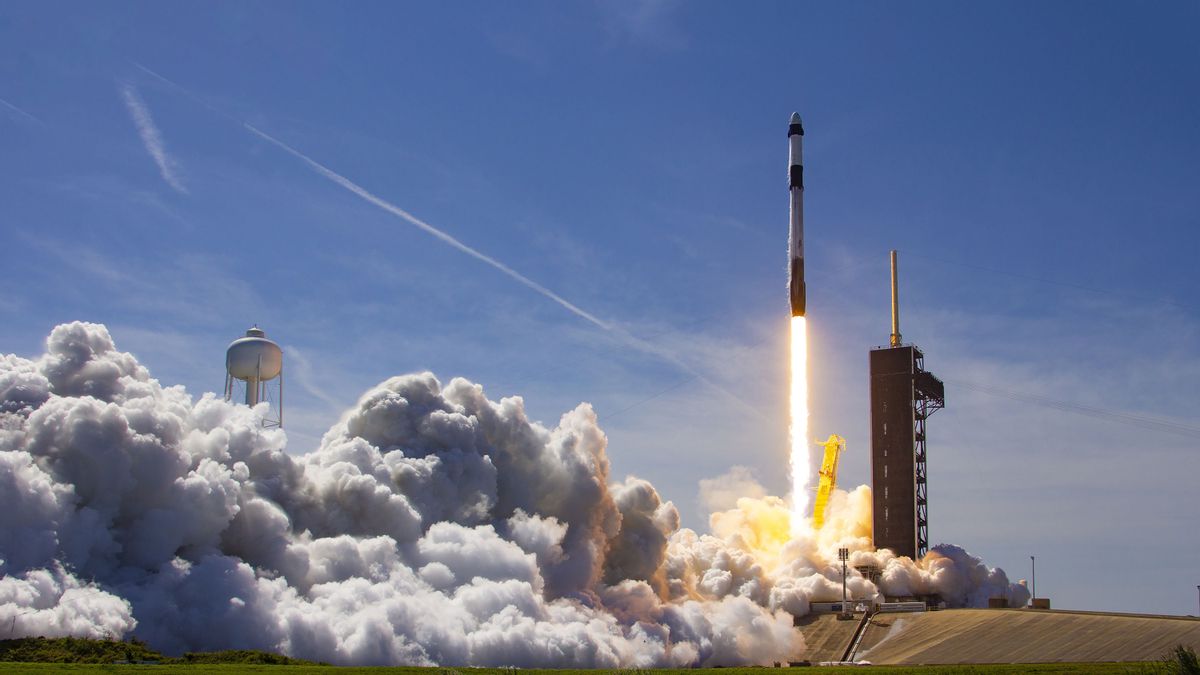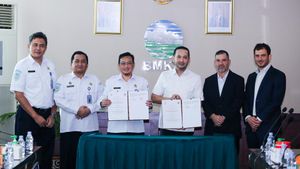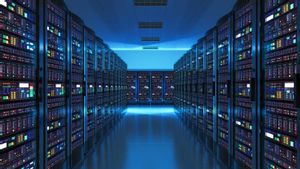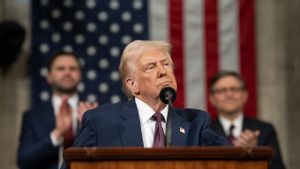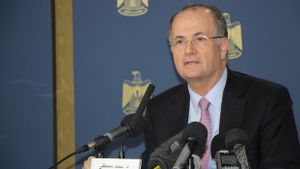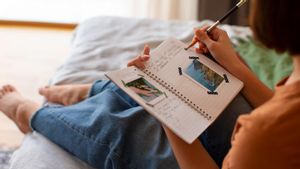JAKARTA - A rocket belonging to SpaceX was launched again on Friday, April 8 carrying the first team of private astronauts ever launched to the International Space Station (ISS). The flight won praise from industry executives and NASA, for being considered a milestone in the commercialization of space flight.
The four-member team selected by Houston-based startup Axiom Space Inc for its space debut and historic orbital science mission took off at 11:17 a.m. EDT (22:17 BST) from NASA's Kennedy Space Center in Cape Canaveral, Florida.
A live video web broadcast by Axiom shows a 25-story SpaceX launch vehicle consisting of a two-stage Falcon 9 rocket topped with a Crew Dragon capsule. The rocket soared into the blue sky over Florida's Atlantic coast on a fiery, yellowish tail of exhaust.
Cameras inside the crew compartment flashed footage of four men strapped to a pressurized cabin, sitting quietly in their white-and-black helmet suits as the rocket soared into space.
Watch Dragon and the @Axiom_Space Ax-1 crew dock with the @space_station → https://t.co/N3MHSxCS0k https://t.co/QkDJTTXqvK
— SpaceX (@SpaceX) April 9, 2022
Nine minutes after launch, the upper part of the rocket sends the crew capsule into initial orbit. Meanwhile, the lower part of the rocket is reusable, detached from the rest of the spacecraft. The piece flew back to Earth and landed safely on a landing platform floating on an unmanned ship in the Atlantic.
Webcast launch commentator Kate Tice described the launch as "absolutely picture perfect." A crew member can be heard telling mission control in a radio transmission, "It was an amazing journey."
The quartet, led by retired NASA astronaut Michael Lopez-Alegria, arrived at the space station on Saturday, April 9 after a flight of more than 20 hours, or 18:00 WIB. The autonomously operated Crew Dragon will dock with an orbiting outpost about 250 miles (400 km) above Earth.
SpaceX, the rocket company founded in 2002 by billionaire Elon Musk, directs mission control for flights from its headquarters near Los Angeles.
NASA, in addition to equipping the launch site, will be in charge of the astronauts once they meet the space station to conduct eight days of science and biomedical research while in orbit.
The mission, representing a partnership between Axiom, SpaceX and NASA, is what the three call a major step in expanding the commercial space venture that insiders collectively refer to as the low-Earth orbit economy, or "LEO economy" for short. .
"We're taking commercial business off the face of the earth and putting it in space," NASA chief Bill Nelson said before the flight. He added the shift allowed his agency to focus more on sending humans back to the moon, to Mars and on other space exploration.
Last Friday's launch was also SpaceX's sixth human spaceflight in nearly two years. Success follows four NASA astronaut missions to the space station and the launch of "Inspiration 4" in September that sent all civilian crew members into orbit for the first time. The flight did not dock with the ISS.
While the space station has hosted civilian visitors from time to time, the Ax-1 mission will mark the first team of commercial astronauts to use the ISS for its intended purpose as an orbiting research laboratory.
The four-person Axiom team will share a weightless work environment with seven members of the government-paid regular ISS crew. They are three American astronauts, a German astronaut, and three Russian cosmonauts.
Lopez-Alegria, 63, the Spanish-born Axiom mission commander, is also the company's vice president for business development. His second deputy was Larry Connor, a real estate and technology entrepreneur and aerobatic aviator from Ohio who was appointed as the mission pilot. Connor is in his 70s but the company doesn't provide an exact age.
Complementing the Ax-1 team are Israeli philanthropist and former fighter pilot Eytan Stibbe, 64, and Canadian businessman and philanthropist Mark Pathy, 52, both of whom serve as mission specialists. The flight made Stibbe the second Israeli in space, after Ilan Ramon, who died along with six NASA crew members in the 2003 space shuttle Columbia disaster.
Axiom's crew members may seem to have a lot in common with the many wealthy passengers who have taken suborbital rides in recent months aboard the Blue Origin and Virgin Galactic services offered by billionaires Jeff Bezos and Richard Branson, respectively.
But Axiom says its mission goes far beyond space tourism, with each crew member undergoing hundreds of hours of astronaut training with NASA and SpaceX.
The Ax-1 team will also conduct about two dozen science experiments aboard the ISS, including research on brain health, cardiac stem cells, cancer and aging, as well as a demonstration of technology for generating optics using the surface tension of liquids in microgravity, company executives said.
Launched into orbit in 1998, the ISS space station has been continuously occupied since 2000 under a US-Russia-led partnership including Canada, Japan and 11 European countries.
The English, Chinese, Japanese, Arabic, and French versions are automatically generated by the AI. So there may still be inaccuracies in translating, please always see Indonesian as our main language. (system supported by DigitalSiber.id)
